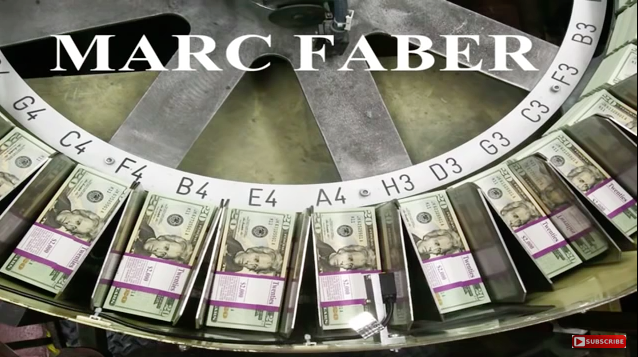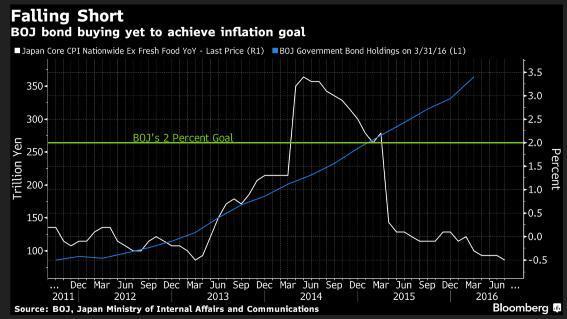Stocks & Equities
 Over a third and growing quickly. That’s the share of the market that’s now comprised of blind sheep passive indexers. That much passive money is nothing to sneeze at. Call me old-fashioned, but I was originally led to believe that…
Over a third and growing quickly. That’s the share of the market that’s now comprised of blind sheep passive indexers. That much passive money is nothing to sneeze at. Call me old-fashioned, but I was originally led to believe that…
…related:
Marc Faber Rings the Alarm Bell, Predicts a 50% Near Term Correction in Stocks

Martin Armstrong was asked this QUESTION: “What comes first – The banking Crisis or the Sovereign Debt Crisis?
 ANSWER: The central banks are trapped. They can no longer even hope to sell the bonds they have bought in a vain attempt to stimulate the economy. So government can, in theory, keep their rates at zero as long as the central banks buy it, but they won’t be able to sell it to the public. The Sovereign Debt Crisis is already here. The liquidity is collapsing and central banks are rapidly becoming the only buyer.
ANSWER: The central banks are trapped. They can no longer even hope to sell the bonds they have bought in a vain attempt to stimulate the economy. So government can, in theory, keep their rates at zero as long as the central banks buy it, but they won’t be able to sell it to the public. The Sovereign Debt Crisis is already here. The liquidity is collapsing and central banks are rapidly becoming the only buyer.
True, German 10-year notes have sold well, but that is a bet AGAINST the euro surviving rather than people willing to pay just for the state to hold their money. They count on the central bank buying if they want to sell. What happens when the central banks stop the buying? I would not want to own any government paper. I would expect its price to drop 25% in the first three months from the turn.
As for banks, well, in Europe they are like the “Walking Dead.” The real telltale break may be Deutsche Bank. I seriously doubt the German government can stand by and do a bail-in. They might do that to accounts with a lot of cash, but then they will be wiping out companies and that will come back to haunt them in unemployment.
There is a THIRD DANGER… …in the equation that nobody seems to be talking about. Oh, there are people talking about the amount of derivatives. Some even place the derivative book at Deutsche Bank at least at 5 times the GDP of Germany. But that is looking at things from a gross perspective, which is like adding up all long and short positions in a futures market and claiming the open interest is both combined. The true amount is the net offset, not the combined totals. But what they ignore is not the banks directly, but the pretend clearing houses setup after 2007.
The Bank of International Settlements (BIS) has issued a report on the derivative clearing houses. Unquestionably, there is a high concentration of risk among the 10 central derivatives counterparties and clearinghouses, which they lack the ability to manage. Some central counterparties mentioned without names in the report have no guidebook to explain how to judge the extent of financial risk in such complicated instruments. The total value of these contracts in the world is more than $600 trillion, according to the BIS. However, the BIS is proposing standards to try to get a handle on that risk.
The one thing to come out of the 2007-2009 debacle was the LACK of central clearinghouses. The movie “Big Short” illustrates how, without a central clearinghouse, the banks could refuse to acknowledge a loss until they have covered themselves. Now, the clearinghouses would eliminate that problem if they remained free of bribes and political pressure to hide losses. So with these clearing houses, they may not be capable of defining the risk. They will probably be susceptible to rigging the game to try to hide a default in hopes that it will go away in a day or two. That could make things much worse during a panic.
…also from Martin: It’s Time To Turn The Lights Out In Illinois
….and Holding Cash – Prelude to the Crash & Burn


Nassim Taleb, of “Black Swan” fame, was asked, “What are the biggest risks out there right now?” He replied:
The fact that the world, as a result of quantitative easing, has seen an asset inflation that benefited the uber-rich, and that nothing has been cured. One cannot cure debt with debt, by transferring from private to public sectors. The markets will ultimately crash again, although this time it will hurt a lot more people.
Taleb suggests investors ought to be “tail hedging” their portfolios as a result. So ‘what is tail hedging?’ you might ask. The “tail” part of it simply refers to the ends of a normal, bell-shaped distribution curve. These represent events in the market that very rarely occur. In this case, it refers to a stock market crash.
related: Marc Faber Rings the Alarm Bell, Predicts a 50% Near Term Correction in Stocks

For most of the world, the past decade’s monetary and fiscal experiments are viewed as failures. See, for instance, French support for the EU project crumbling on both left and rightand Why were smart people suckered by Abenomics?
So what do the best and brightest now running global economic policy do when their experiments don’t work? Apparently they double down, repeating the experiment with an even bigger dose. In Japan:
BOJ Needs Massive Move to Shock & Awe, $2 Trillion Investor Says
(Bloomberg) – The Bank of Japan could announce a “massive stimulus program” as the nation seeks to reach a 2 percent inflation target, according to UBS Wealth Management.
“It is how much they do, and whether they can create that kind of shock and awe at this point in the cycle,” said Mark Haefele, global chief investment officer at UBS Wealth Management, in a Bloomberg Television interview, on Monday. “They could announce a massive stimulus program both on the monetary and fiscal side or they could end up reducing their inflation targets. Right now, it looks like they are going to use more stimulus. ”
Governor Haruhiko Kuroda said over the weekend in the U.S. that the central bank won’t hesitate to boost monetary stimulus if needed, and there is ample space for additional easing. He also said at the Federal Reserve’s annual policy retreat in Jackson Hole, Wyoming, that the central bank will carefully consider how to best use policy to achieve its price stability target.
Consumer prices excluding fresh food — the BOJ’s benchmark inflation gauge — fell 0.5 percent in July from a year earlier, government data earlier this month showed. That was the steepest drop since March 2013, the month before Kuroda launched unprecedented stimulus.
Benchmark 10-year JGB yields reached a record low of minus 0.3 percent last month before rising to minus 0.07 percent Monday in Tokyo. The BOJ refrained from increasing bond purchases or cutting negative interest rates further in July.
Central Bank Jeopardy
Japan’s inability to achieve its goals has “put that country and that central bank into some kind of jeopardy that they are going to have to work their way out of,” according to Haefele. He oversees the investment policy and strategy for about $2 trillion in invested assets at UBS Wealth Management, according to UBS’s website.
The BOJ is currently undertaking a review of its monetary policy ahead of its next meeting Sept. 20-21. Whether the central bank adopts more stimulus with the yen at its current level or waits to see if it strengthens more is “an open question,” he said.
“It is hard to say that any one move is going to be enough given the history of stimulus in Japan has been erratic,” Haefele said. “But everybody is hoping that they will give it another try because clearly Japan, despite reaffirming their inflation targets, has not been able to hit them.”
Well, yeah, the BoJ doubling down from here would definitely “shock” the markets, but probably not in the positive way its advocates hope. The above chart is a little hard to read (Bloomberg’s esthetic sensibilities have become ever-stranger in recent years) but its point is clear: Three years into an epic debt and money creation binge, the result is approximately nothing. Inflation – that is, the rate at which the yen is losing value – has not only not risen, it has fallen to the point that the yen is gaining value. For a heavily-indebted society, deflation (i.e., an appreciating currency) is an existential threat, as debts that are already too big to manage become even more debilitating.
But if tens of trillions of newly-minted yen didn’t work the first time around, why would tens of trillions more do any better? The answer is that they probably won’t, and are more likely to destabilize the system in one way or another than to produce steady, mildly-inflationary growth.
Meanwhile, if Japan goes for it the way history suggests and most observers now expect, what will they buy with their new yen? BoJ already owns nearly all the available Japanese sovereign debt and a big chunk of domestic equities. So would it buy up the rest of the stock market, or encourage corporations to leverage themselves even further by issuing more debt? Or would it look abroad and start loading up on US and European stocks? All of these possibilities take BoJ outside the bounds of what used to be considered a central bank’s role. So whatever comes next will be new and fascinating from a theoretical standpoint and flat-out crazy from any other angle.
And either way, win or lose, Japan’s next big move will set other players in motion. If it manages to send the yen off a cliff, then Japan’s exporting industries win big – but at the expense of European, US and Chinese counterparts. Europe in particular would have to respond in kind with a big, fast euro devaluation (see the article on France that opens this post). So too would China, the US and maybe even the emerging markets that will be destabilized by hot money inflows if the developed world escalates the currency war.
Whatever way you slice it, 2017 is looking like quite a show. And as always these days, gold looks like the main beneficiary.
….also: Only Two Choices….Both Miserable

Marc Faber recently forecast a 50% decline in the US Stock Market. In this interview he elaborates and discusses FED, Negative İnterest Rates, Asian Nations, War On Cash, and the China Credit Bubble.
related for traders from Victor Adair: Live From The Trading Desk: Brace Yourself














